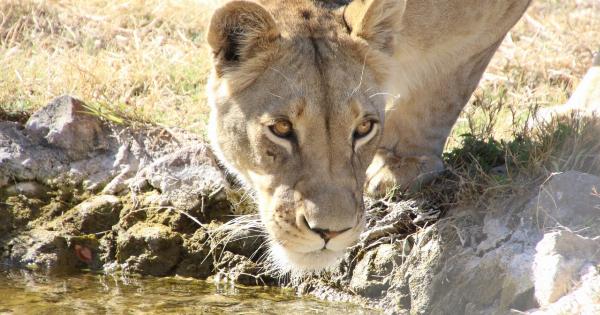Rabies is a deadly viral disease that affects the central nervous system of mammals. While most people are familiar with the risks associated with rabid dogs, it’s important to be aware that other animals can also carry and transmit the virus.
In this article, we will explore the symptoms of rabies in unfamiliar animals and learn how to stay safe.
What is rabies?
Rabies is caused by the rabies virus, which is typically transmitted through the bite of an infected animal. The virus attacks the nervous system, leading to inflammation in the brain and eventually death if left untreated.
It is important to note that rabies is a zoonotic disease, meaning it can be transmitted from animals to humans.
Rabies symptoms in animals
Animals infected with rabies may exhibit a combination of neurological and behavioral changes. While the specific symptoms can vary depending on the animal species, there are some common signs to watch out for:.
- Unexplained aggression
- Excessive salivation
- Disorientation and confusion
- Paralysis
- Unusual shyness or fearfulness
- Changes in vocalization
- Difficulty swallowing
- Erratic behavior
- Loss of appetite
- Unsteady gait
It is important to remember that not all animals exhibiting these symptoms may have rabies, as other diseases or conditions can also cause similar signs.
However, it is always best to err on the side of caution and avoid contact with unfamiliar animals displaying any of these behaviors.
Common carriers of rabies
While domestic dogs are the most common carriers of rabies worldwide, other animals can also be infected. Some of the most common carriers of rabies include:.
- Bats
- Raccoons
- Foxes
- Skunks
- Coyotes
These animals can transmit the virus through their saliva, either through a bite or by coming into contact with broken skin or mucous membranes.
Preventing rabies exposure
The best way to prevent rabies exposure is to avoid contact with unfamiliar animals, especially those exhibiting any of the aforementioned symptoms. Here are some additional precautions you can take:.
- Never approach or handle wild or stray animals, especially when they seem sick or behave strangely.
- Don’t leave pet food or garbage outside, as it may attract wild animals.
- Ensure your pets are up-to-date on their rabies vaccinations.
- Keep your pets indoors or supervise them when outside to minimize contact with potentially infected animals.
- Seal off any openings or holes in your home to prevent bats from entering.
- Teach children about the dangers of approaching unfamiliar animals, both domestic and wild.
- If you are bitten by an animal, wash the wound thoroughly with soap and water and seek immediate medical attention.
It is crucial to note that rabies is preventable if prompt medical attention is sought after a potential exposure. However, once symptoms develop, rabies is almost always fatal for both animals and humans.
What to do if you encounter a potentially infected animal
If you come across an unfamiliar animal that may be exhibiting rabies symptoms, it is important to take the following steps:.
- Do not approach or attempt to handle the animal.
- Stay calm and ensure that children and pets are kept at a safe distance.
- Do not try to capture or kill the animal, as this may result in further exposure.
- Call your local animal control or wildlife management authorities to report the sighting.
- Provide them with as much information as possible, including the location, description of the animal, and its behavior.
- Follow any instructions given by the authorities and cooperate fully to ensure the safety of yourself and others.
Remember, it is always better to be safe than sorry when it comes to potential rabies exposure. By being cautious and vigilant, you can help protect yourself and your loved ones from this deadly disease.
Conclusion
Rabies is a serious disease that poses a significant risk to both animals and humans. While most people are aware of the dangers associated with rabid dogs, other animals can also carry and transmit the virus.
By recognizing the symptoms of rabies in unfamiliar animals and taking necessary precautions, we can minimize the risk of exposure and ensure the safety of ourselves and our communities.































